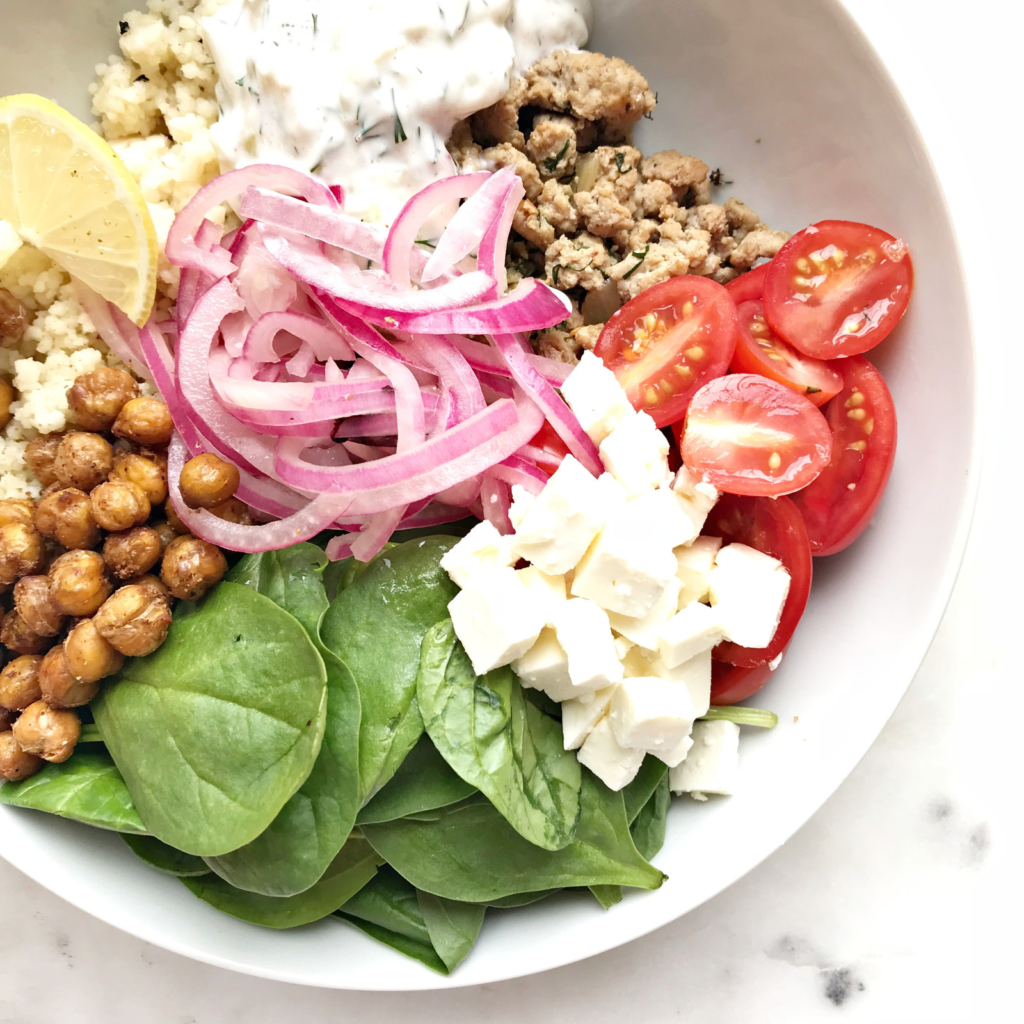

Jane had been working in her home garden, as she often did to unwind from her bustling city life. On this particular afternoon, her trusty phone buzzed, alerting her to an incoming call. She wiped her dirt-caked hands on her faded denim jeans, then answered.
“Hello?”
“Hi, Jane, it’s Mike. How are you?”
Jane smiled. Mike was an old college friend, a brilliant scientist who had dedicated his life to medical research. “I’m good, Mike, just getting my hands dirty. What’s new in the world of science?”
“I think you’re going to want to hear this,” Mike began. His voice held an excitement that made Jane lean in. “Remember how we always talked about finding natural ways to combat diseases like Type 2 diabetes? Well, we’ve made an incredible discovery.”
Jane felt a twinge of excitement. Her father had lived with Type 2 diabetes for years, and she was always on the lookout for better management strategies.
Mike continued, “We’ve found two ingredients that could significantly help manage blood sugar levels. And the best part? They’re natural and can be incorporated into everyday diets. Can you believe that?”
Jane could hardly contain her excitement. “That’s amazing, Mike! What are these ingredients?”
Before Mike could respond, Jane’s call waiting beeped – her father was on the other line. She said goodbye to Mike, promising to call back later, and clicked over to her father’s call. But her mind was abuzz with Mike’s news. She had to know more.
After her call with her father, Jane headed back into her home, washed up, and then sat down at her computer. She typed Mike’s name into Google and found his latest research paper, but it was locked behind complicated scientific jargon that she couldn’t comprehend. Frustrated, she began to wonder how she could understand these groundbreaking findings.
That’s when Jane stumbled upon an accessible, user-friendly article on drnicollemd.com: “Scientists Discover 2 Ingredients That Help You Manage Type 2 Diabetes”. The article seemed to distill complex research into comprehensible nuggets of information. Eagerly, she clicked the link, hoping to understand more about these two ingredients that could potentially change her father’s life.
To be continued in the blog post below…

Managing Type 2 diabetes is a complex and multifaceted process, requiring careful attention to various aspects of one’s lifestyle. By exploring the glycemic index and benefits of a whole-food plant-based diet for diabetics, we will address how managing Type 2 diabetes requires attention to dietary choices as well as considering nutrient depletion in modern foods.
Nutrient depletion in modern foods can also impact patient care for those with diabetes mellitus. We’ll explore how soil depletion affects nutritional content in crops and discuss food processing techniques’ effects on nutrient preservation.
Beyond dietary considerations, we will introduce you to a Blood Sugar Support Bundle by highlighting key ingredients that may help manage Type 2 diabetes more effectively. Moreover, we will present direction for monitoring your blood sugar levels before and after meals, as well as at night.
Lastly, physical activity plays an essential part in controlling diabetes; therefore, we’ll cover aerobic exercise’s impact on glucose management as well as the benefits of yoga and resistance training for improving insulin sensitivity. By implementing these strategies alongside stress reduction techniques and intermittent fasting routines discussed hereinafter , you can take charge of your health journey towards preventing or better managing Type 2 Diabetes.

Minimize Medications. Maximize Health.
Are you super busy but need to take control of your health? Are you tired of being tired? Subscribe to my “Minimize Medications, Maximize Health Blog” and I’ll give you 7 Tips to Get Healthy in No Time absolutely FREE.
You have Successfully Subscribed!
The Importance of Diet in Managing Type 2 Diabetes
When it comes to managing type 2 diabetes, your diet plays a crucial role. A healthy and balanced meal plan can significantly improve blood sugar levels and even reverse the disease altogether. In this section, we’ll explore the importance of dietary choices for individuals with type 2 diabetes mellitus, focusing on low glycemic, whole-food plant-based meals that promote optimal health.
Understanding the Glycemic Index and Its Effect on Blood Sugar Levels
The glycemic index (GI) is a ranking system that measures how different foods affect blood sugar levels. Foods with a high GI can lead to abrupt increases in blood glucose, whereas those with a lower GI cause slower and more progressive rises. For people living with type 2 diabetes or aiming to prevent it, consuming foods lower on the glycemic scale can help maintain stable insulin doses and better overall patient care.
- Low-GI Foods: Whole grains like quinoa or barley; legumes such as lentils; non-starchy vegetables like leafy greens; most fruits except melons and pineapples.
- Moderate-GI Foods: Brown rice or whole wheat pasta; starchy vegetables like sweet potatoes or corn; some tropical fruits such as mangoes or papayas.
- High-GI Foods: White bread or refined cereals; sugary snacks like cookies or cakes; processed potato products including fries and chips.
Benefits of a Whole-Food Plant-Based Diet for Diabetics
A whole-food plant-based diet (WFPB) emphasizes the consumption of unprocessed or minimally processed fruits, vegetables, whole grains, legumes, nuts, and seeds. This nutrient-dense approach to eating has been shown to provide numerous health benefits for individuals with type 2 diabetes:
- Better Blood Sugar Control: A WFPB diet is naturally low in refined carbohydrates and high in fiber, which helps regulate blood sugar levels.
- Weight Loss: Consuming nutrient-rich foods can help you feel full longer while consuming fewer calories overall – leading to weight loss that further improves insulin sensitivity.
- Lowers Heart Disease Risk: The antioxidants and anti-inflammatory properties found in plant-based foods protect against cardiovascular disease – a common complication among diabetics.
Incorporating these dietary changes into your daily routine may seem daunting at first, but remember: small steps lead to big results. Begin by gradually adding more whole-foods into your meals while reducing processed options. With time and consistency, you’ll notice significant improvements not only in managing your diabetes but also enhancing your overall well-being. Up next, we’ll reveal the 2 ingredients that scientists discovered to help you manage type 2 diabetes.

Garlic and Onion: The Dynamic Duo for Lowering Blood Sugar in Diabetes Mellitus
If you have diabetes mellitus, you know how important it is to keep your blood sugar levels under control. While medication can be helpful, adding garlic and onion to your diet may also help lower your blood sugar naturally.
The Benefits of Garlic
- Garlic contains compounds that increase insulin sensitivity, which means the body needs less insulin to process glucose.
- A study published in the Journal of Medicinal Food found that taking garlic supplements lowered fasting blood glucose levels by an average of 23 mg/dL compared to a placebo group.
- Incorporating fresh garlic into meals is easy and delicious! Try roasting cloves with olive oil or adding minced garlic to stir-fries or soups.
The Power of Onion
- Onions contain sulfur compounds that stimulate insulin production and improve insulin sensitivity.
- A review published in the journal Nutrition & Metabolism found that consuming onions improved glycemic control in people with type 1 and type 2 diabetes mellitus.
- Note: For those who are sensitive to high FODMAP foods (Fermentable Oligosaccharides Disaccharides Monosaccharides And Polyols), onions might cause digestive discomforts such as bloating.
You can add raw sliced onion rings on top of salads or sandwiches, caramelize them as a side dish or cook them up with other veggies like bell peppers for added flavor!
For people who want to add more onion to their diet, they can use yellow or red onions, or onion extract. Garlic can be added to meals from the natural clove form or it can be taken using a garlic extract. In the form of supplements, in addition to lowering blood glucose, the garlic can lower inflammation, blood pressure, heart disease and cholesterol.
In addition to incorporating these flavorful ingredients into your meals, make sure you’re getting regular exercise, staying hydrated throughout the day, and monitoring your insulin dose as directed by your healthcare provider for optimal patient care.
For more information on managing diabetes mellitus with integrative therapies and lifestyle changes, check out Dr. Nicolle MD’s website.
The significance of nourishment in handling type 2 diabetes is immense; keeping blood sugar levels steady is vital. By understanding the effects of soil depletion and food processing techniques on nutrient preservation, we can make more informed decisions about our diets that will help us better manage our condition.
To manage type 2 diabetes, a healthy and balanced meal plan is crucial. A diet that includes low glycemic whole foods such as quinoa, lentils, leafy greens, and most fruits can help regulate blood sugar levels and provide numerous health benefits for individuals with type 2 diabetes. Incorporating these dietary changes into your daily routine gradually can lead to significant improvements in managing diabetes while enhancing overall well-being.
Nutrient Depletion in Modern Foods
Our modern foods have become deficient in essential nutrients as a result of multiple causes, such as soil depletion, food processing techniques, and genetic modifications. This decline in nutritional content can make it challenging for busy professionals with type 2 diabetes to manage their blood sugar levels effectively.
Soil Depletion’s Impact on Nutritional Content in Crops
Soil depletion occurs when essential minerals are removed from the ground through intensive farming practices without being replenished. Over time, this results in crops that contain fewer nutrients than they once did. For instance, a study comparing the nutritional content of fruits and vegetables between 1950 and 1999 found significant declines in protein, calcium, phosphorus, iron, riboflavin (vitamin B2), and vitamin C. As a result of these deficiencies caused by soil depletion alone, managing diabetes mellitus becomes increasingly difficult since patients require optimal nutrition intake alongside insulin dose adjustments for proper patient care.
Effects of Food Processing Techniques on Nutrient Preservation
In addition to soil depletion issues affecting our food supply chain’s quality at its core level, many commonly consumed items undergo various food processing techniques. While some methods help preserve or enhance certain nutrients within products, others strip away vital components needed by those living with chronic diseases like type 2 diabetes. We rely heavily upon balanced diets full of rich natural sources such as vitamins and minerals throughout our daily lives. Here are a few examples of processing techniques that can negatively impact nutrient content:
- Refining grains: The process of refining whole grains into white flour removes the bran and germ, which contain essential nutrients such as fiber, B vitamins, and minerals.
- Canning fruits and vegetables: Canned produce often loses some of its nutritional value due to high heat exposure during the canning process.
- Pasteurization: This heat treatment used for milk products destroys certain enzymes and vitamins while extending shelf life at stores nationwide.
Moreover, genetic alterations in crops have also led to changes in nutrient composition. For example, genetically modified (GM) soybeans contain fewer isoflavones than traditional varieties. Isoflavones play an important role in blood sugar regulation; thus GM soybean consumption may not provide optimal support needed by those managing type 2 diabetes, on top of everything else they’re already dealing with on a day-to-day basis.
In light of these challenges posed by modern food production methods, it becomes increasingly clear just how crucial dietary supplements like Dr. Nicolle’s Blood Sugar Support Bundle are when attempting proper management strategies within one’s own personal health journey towards better overall wellness and disease prevention alike.
The nutrient depletion in modern foods is an important factor to consider when looking at health and chronic disease management. Thankfully, a range of natural supplements exist to assist those with type 2 diabetes in maintaining balanced blood sugar levels.
Modern foods have become less nutrient-dense due to soil depletion, food processing techniques, and genetic alterations. This can make it challenging for busy professionals with type 2 diabetes to manage their blood sugar levels effectively. Soil depletion causes crops that contain fewer nutrients than they once did, making managing diabetes mellitus increasingly difficult since patients require optimal nutrition intake alongside insulin dose adjustments for proper patient care.
Blood Sugar Support Bundle – Key Ingredients
No doubt, our current diets are not up to the mark when it comes to fundamental nutrients. But fear not. Our Blood Sugar Support Bundle is here to save the day (and your blood sugar levels). This bundle contains two key ingredients that have been scientifically proven to aid those with type 2 diabetes. Let’s dive into these magical components and see how they work their wonders.
Ingredient #1: Chromium
The Superhero Mineral for Blood Sugar Control.
You might not have heard of chromium before, but this trace mineral is about to become your new best friend in managing diabetes mellitus. Chromium plays an important role in enhancing insulin sensitivity and improving glucose metabolism, which means better control over your blood sugar levels.1
- Better Insulin Sensitivity: Studies show that supplementing with chromium can help improve insulin sensitivity2, making it easier for your body to respond appropriately when there’s too much or too little glucose in the bloodstream.
- Glycemic Control: Research has found that people with type 2 diabetes who take chromium supplements experience significant improvements in glycemic control3, including reduced fasting blood sugar levels and lower HbA1c values.
Ingredient #2: Alpha-Lipoic Acid (ALA)
The Antioxidant Powerhouse for Diabetic Nerve Health.
Alpha-lipoic acid, or ALA, is a powerful antioxidant that has been shown to have numerous benefits for people with type 2 diabetes. Not only can it help improve insulin sensitivity,4 but it also plays a crucial role in protecting against diabetic neuropathy – nerve damage caused by high blood sugar levels.5
- Nerve Protection: ALA’s potent antioxidant properties help protect nerves from the damaging effects of oxidative stress.5 This makes it an essential nutrient for those looking to prevent or manage diabetic neuropathy.
- Blood Sugar Management: Supplementing with alpha-lipoic acid has been shown to improve glucose metabolism and reduce insulin resistance,7 which means better overall patient care when managing your diabetes.
Incorporating these two powerhouse ingredients into your daily routine through our Blood Sugar Support Bundle can make all the difference in managing your type 2 diabetes. So why wait? Give your body the nutrients it needs to keep blood sugar levels in check and live a healthier, happier life.
The Blood Sugar Support Bundle contains key ingredients to help manage Type 2 Diabetes, and by monitoring your blood sugar levels effectively you can further ensure that the disease is managed in a healthy way. With proper pre-meal testing guidelines, post-meal testing recommendations, and bedtime monitoring practices, it’s possible to keep diabetes under control without relying solely on medications.
The Blood Sugar Support Bundle contains two key ingredients, chromium and alpha-lipoic acid (ALA), which aid in managing type 2 diabetes. Chromium improves insulin sensitivity and glycemic control while ALA protects nerves from damage caused by high blood sugar levels and helps manage glucose metabolism. Incorporating these nutrients into your daily routine can make all the difference in keeping blood sugar levels under control for a healthier life.
Monitoring Your Blood Sugar Levels Effectively
Regularly monitoring your blood sugar is essential for understanding how various factors like food intake, activity level, medication use, and stressors affect glucose management among people living with type 2 diabetes. In this part, we’ll provide advice to help you monitor your blood sugar levels accurately and make knowledgeable choices regarding your health.
Pre-meal Testing Guidelines
To ensure that you’re starting each meal on the right foot (or should we say “with the right glucose levels”), it’s important to check your blood sugar before eating. This will give you a baseline reading of where you stand prior to consuming any food. Aim for a pre-meal target range between 80-130 mg/dL, as recommended by the American Diabetes Association.
Post-meal Testing Recommendations
The real test comes after eating when our bodies are hard at work digesting all those delicious nutrients. To gauge how well your body is managing its postprandial (that’s just fancy talk for “after eating”) glucose response, measure your blood sugar again two hours after finishing a meal. Ideally, these readings should be less than 180 mg/dL. If they consistently fall outside this range or show significant fluctuations from day-to-day or week-to-week basis, it may be time to reevaluate what’s on your plate.
- TIP: Keep track of which foods cause the most significant spikes in your blood sugar levels. This can help you identify potential culprits and make more informed dietary choices moving forward.
Bedtime Monitoring Practices
Before retiring for the night, it’s essential to assess your blood sugar levels one last time in order to gain insight into how well your body is managing glucose during this critical period of potential dips or surges. Bedtime readings are particularly important because they provide insight into how well your body is managing glucose overnight – a critical period when many people experience dips or surges in their levels. Aim for a bedtime target range of 100-150 mg/dL, but always consult with your healthcare provider about the best individualized targets for you.
- TIP: If you’re practicing intermittent fasting or adjusting medication doses at night, be extra vigilant with bedtime monitoring to ensure optimal glucose control during these times.
Incorporating these testing guidelines into your daily routine will not only help keep those pesky blood sugar fluctuations at bay but also empower you to take charge of managing type 2 diabetes like the busy professional that you are.
By engaging in physical activity, you can regulate your blood sugar levels and effectively manage type 2 diabetes. By understanding the impact of aerobic exercise on glucose management, exploring yoga’s benefits for diabetics, and considering resistance training’s influence on insulin sensitivity, you can take control of your health to minimize medication use and maximize wellbeing.
To effectively manage type 2 diabetes, it is important to regularly monitor blood sugar levels before and after meals as well as at bedtime. Aim for target ranges recommended by the American Diabetes Association and keep track of foods that cause significant spikes in glucose levels. Being vigilant with monitoring can help you take charge of their health and make informed dietary choices.
Physical Activity’s Role in Controlling Diabetes
Engaging in regular physical activity can improve overall health and reduce the risk of developing chronic diseases, including type 2 diabetes. This section will explore various exercises that are beneficial for managing blood sugar levels and promoting a healthier lifestyle.
The impact of aerobic exercise on glucose management
Aerobic exercise is any activity that increases your heart rate and breathing while using large muscle groups repetitively. Examples include walking, swimming, cycling, or dancing. These activities have been shown to improve insulin sensitivity, which means your body uses insulin more effectively to lower blood sugar levels after meals. Additionally, aerobic exercise helps with weight loss – an essential factor for individuals looking to manage their type 2 diabetes better.
- Tip: Aim for at least 150 minutes of moderate-intensity aerobic activity per week or 75 minutes of vigorous-intensity activity spread over three days per week with no more than two consecutive days without exercising.
Benefits of yoga for diabetics
If you’re seeking a low-impact yet effective form of physical activity, look no further than yoga. Practicing yoga regularly has been found to reduce stress levels, which plays a significant role in managing blood sugar fluctuations. Moreover, specific poses like downward dog or child’s pose help stretch muscles involved in maintaining proper posture – something many busy professionals struggle with due to sedentary work environments.
- Suggestion: Consider joining a local yoga class or exploring online resources to find a routine that suits your needs and preferences.
Resistance training’s role in improving insulin sensitivity
Resistance training, also known as strength or weight training, involves using resistance (like resistance bands as in the above picture, weights, or bodyweight) to build muscle mass. This type of exercise is particularly beneficial for individuals with type 2 diabetes because it improves insulin sensitivity, making it easier for the body to utilize glucose from the bloodstream. Furthermore, increased muscle mass helps burn more calories at rest – contributing positively towards weight management goals.
- Idea: Incorporate resistance exercises like squats, lunges, push-ups, and planks into your workout routine two to three times per week.
Incorporating regular physical activity into your lifestyle is crucial when managing type 2 diabetes effectively. By exploring various forms of exercise such as aerobic activities, yoga practices, and resistance training sessions – you’ll not only improve blood sugar control but also enhance overall well-being. So go ahead; lace up those sneakers and get moving today.
Engaging in physical activity is an important part of managing diabetes, as it helps to regulate blood sugar levels and increase insulin sensitivity. Making alterations to one’s lifestyle, such as lessening stress and applying intermittent fasting, can assist in avoiding the emergence of type 2 diabetes.
Regular physical activity is essential for managing type 2 diabetes effectively. Aerobic exercises like walking, swimming, or cycling can improve insulin sensitivity and aid in weight loss. Yoga reduces stress levels while resistance training helps build muscle mass and improves insulin sensitivity.
Preventing Diabetes Through Lifestyle Changes
Making positive lifestyle changes is an essential part of both preventing and managing type 2 diabetes. In this section, we’ll explore essential steps you can take towards embracing a wholesome life, which includes consuming whole foods and engaging in regular physical activities.
Importance of Stress Reduction Techniques
Stress, believe it or not, has an impact on your blood sugar levels. When stressed, the body releases hormones that cause blood sugar to rise. So, learning how to manage stress is crucial for those looking to prevent or control type 2 diabetes. Some effective stress reduction techniques include:
- Meditation: Practicing mindfulness meditation can help lower cortisol levels and improve glucose management.
- Breathing exercises: Deep breathing helps activate the parasympathetic nervous system responsible for relaxation.
- Tai Chi: This ancient Chinese practice combines slow movements with deep breathing techniques that promote mental calmness and physical balance.
Implementing Intermittent Fasting as Part of Your Routine
Intermittent fasting (IF), a popular eating pattern where one alternates between periods of eating and fasting, has gained traction in recent years due to its potential benefits for weight loss and insulin sensitivity improvement. Studies show that IF may be beneficial in reducing insulin resistance among people at risk for developing diabetes mellitus type 2. Some popular IF methods include:
- 16/8 method: Fasting for 16 hours and eating within an 8-hour window.
- 5:2 diet: Consuming only 500-600 calories on two non-consecutive days of the week, while eating normally on the other five days.
- Eat Stop Eat: Involves fasting for a full day once or twice a week.
Before implementing intermittent fasting into your routine, it’s essential to consult with your healthcare provider, especially if you’re already managing diabetes with insulin doses or other medications. Patient care is vital when making significant lifestyle changes that may affect blood sugar levels.
Incorporating these lifestyle changes can go a long way in preventing type 2 diabetes or effectively managing it if you have been diagnosed. By reducing stress through various techniques and experimenting with intermittent fasting under medical supervision, you’ll be taking proactive steps towards better health and improved glucose management. Don’t forget to pair these strategies with a low glycemic, whole-food plant-based diet and regular physical activity for optimal results.
To prevent or manage type 2 diabetes, adopting a healthy lifestyle is crucial. This includes consuming whole foods, engaging in regular physical activity, reducing stress through techniques such as meditation and deep breathing exercises, and implementing intermittent fasting under medical supervision to improve insulin sensitivity. Pairing these strategies with a low glycemic, whole-food plant-based diet can lead to optimal results.
If you would like to receive a free resource sheet to help you take control of diabetes, click the button below to receive your gift.
I wanted to talk about this topic because it is absolutely possible to prevent and even reverse Type 2 Diabetes (but you cannot reverse Type 1). Yes, it’s possible! and emerging studies looking at lifestyle medicine and prevention support this! But I always tell my patients that you must be dedicated and diligent in adopting a healthy lifestyle to get the best results. You can create certain behaviors and practices that will not only enrich your life, but that you can pass on to your family, friends, and community, to help break the cycle of this chronic disease so that you can leave a legacy of health to your loved ones.
I use functional medicine and lifestyle medicine as the first line of treatment, before medications, to treat lifestyle-related chronic diseases. Lifestyle-related chronic diseases include diabetes, hypertension, obesity, and some cancers, just to name a few. Lifestyle practices, such as eating a low glycemic, whole-food plant-based diet and regular physical activity, can help you improve your blood sugar levels, maybe reverse type 2 diabetes. In certain cases, these approaches may even outperform pharmaceutical therapy.
But I always tell my patients that conventional medications may be appropriate at this time to prevent catastrophic illness, but over time, you can work to make the necessary lifestyle changes to possibly reduce and/or eliminate medications. Please remember to always consult your physician for your particular needs and circumstances prior to making any decisions whatsoever.
Tools For Diabetes Prevention and Monitoring
Blood Sugar Monitoring
As you know, I always stress the importance of taking control of your health. Monitoring your blood sugar levels is one of the best ways to do this. To do this, a single drop of blood is collected with disposable lancets and placed on a disposable test strip, which you insert into a home blood-sugar monitoring device, called a glucometer.
The common times for checking your blood sugar are when you first wake up (fasting), before a meal, 2 hours after a meal, and at bedtime; however, you should check your blood sugar as many times a day as your health care team suggests.
Monitoring your blood sugar level provides you and your doctors with important knowledge about how food, activity, medication, stress, and other elements might affect your blood sugar levels. This data will assist you and your doctor in developing a therapy plan that is suited to your demands.
There are several types of blood glucose meters, lancets, and test strips to choose from. I often recommend this glucometer, lancets, and test strips.
Weight Monitoring
Since weight management is very important in combatting chronic diseases such as diabetes, I recommend that you be mindful of your weight and its fluctuations, and that you monitor your weight AT LEAST on a weekly basis. I recommend a scale that includes a body composition monitor (*this scale cannot be used with a pacemaker or other implanted devices).
Physical Activity
Physical activity (or exercise) can improve your health and reduce the risk of developing several chronic diseases like high blood pressure, type 2 diabetes, and cancer, just to name a few. Physical activity actually improves insulin sensitivity. Physical activity can improve your mood, boost your immune system, and even help you maintain a healthy weight.
I often recommend yoga and resistance training for physical activity, but as you are aware, there are plenty of forms of “movement” that you can do! But for the basics, especially if you’re just getting started, yoga and resistance training are where I would start.
Yoga
Yoga can be a great way to improve your strength and flexibility, manage your stress, improve your heart health, and lose weight! I recommend using a grounded yoga mat to connect yourself with the earth and reduce inflammation.
Resistance Training
Resistance training is the mainstay for overall health. It not only has beneficial effects on reducing body fat, it also increases muscle size and strength. Here are some basic dumbbells/free weights that I recommend to everyone.
Another alternative for dumbbells/free weights are resistance bands. They are great for physical therapy, yoga, strength training, and excellent for traveling.
Food!
Remember, living a healthy lifestyle including eating a whole foods plant-based diet and regular physical activity are the best ways to prevent diabetes.
The Diabetes Meal Plan is geared towards those people with diabetes or prediabetes. The foods are moderately low in carbs, low glycemic, fiber rich, and contain a balance of nutrients to help prevent blood sugar spikes and dips. Foods are also included that may help to lower blood sugar.
Please talk with your doctor about any complementary health approaches, including supplements, you use.
Manage Type 2 Diabetes FAQs
To manage Type 2 Diabetes, consider making the following lifestyle changes: adopting a whole-food plant-based diet, engaging in regular physical activity such as aerobic exercise and resistance training, practicing stress reduction techniques like yoga or meditation, and implementing intermittent fasting. Additionally, monitor your blood sugar levels regularly for better control.
Diet and exercise play crucial roles in controlling blood sugar levels. A balanced diet with low glycemic index foods helps maintain stable glucose levels while regular physical activity improves insulin sensitivity and promotes healthy weight management. Combining both strategies ensures optimal glucose regulation for individuals with Type 2 Diabetes.
Natural supplements such as chromium, alpha-lipoic acid, cinnamon extract, berberine HCL, magnesium, fenugreek seeds, bitter melon extract, gymnema sylvestre, omega-3 fatty acids from fish oil or flaxseed oil, may provide additional support in managing Type 2 diabetes alongside conventional treatments.
Functional Medicine aims to address the root causes of diseases like Type 2 diabetes by focusing on individualized treatment plans. This approach considers genetic, environmental, and lifestyle factors to develop personalized interventions that promote optimal health and help manage chronic conditions more effectively.
Alternative therapies such as acupuncture, biofeedback, herbal medicine, Traditional Chinese Medicine, Ayurvedic treatments, or naturopathy may provide additional support in managing Type 2 diabetes. However, it is essential to consult with a healthcare professional before incorporating these practices into your treatment plan.
Final Thoughts
Managing Type 2 Diabetes requires a holistic approach that includes diet, exercise, and monitoring blood sugar levels. Understanding the glycemic index and adopting a whole-food plant-based diet can have significant benefits for individuals with diabetes mellitus. Nutrient depletion in modern foods is also an important consideration when planning meals.
Checking blood glucose concentrations prior to and after eating, as well as before bedtime, is essential for managing diabetes correctly. Physical activity plays a vital role in controlling glucose levels, with aerobic exercise, yoga, and resistance training all offering unique benefits. Finally, lifestyle changes such as stress reduction techniques and intermittent fasting can help prevent the development of diabetes mellitus.
If you’re looking for expert guidance on managing Type 2 Diabetes or other chronic conditions through natural means, visit DrNicolleMD.com. Our team of healthcare professionals will work with you to develop personalized treatment plans that address your specific needs.
Dr. Nicolle Martin
Some of the links in this article are "affiliate links", a link with a special tracking code. This means if you click on an affiliate link and purchase the item, we will receive an affiliate commission.
The price of the item is the same whether it is an affiliate link or not. Regardless, we only recommend products or services we believe will add value to our readers.
By using the affiliate links, you are helping support our Website, and we genuinely appreciate your support.
Last updated on May 24th, 2023 at 05:29 pm

Minimize Medications. Maximize Health.
Are you super busy but need to take control of your health? Are you tired of being tired? Subscribe to my “Minimize Medications, Maximize Health Blog” and I’ll give you 7 Tips to Get Healthy in No Time absolutely FREE.









